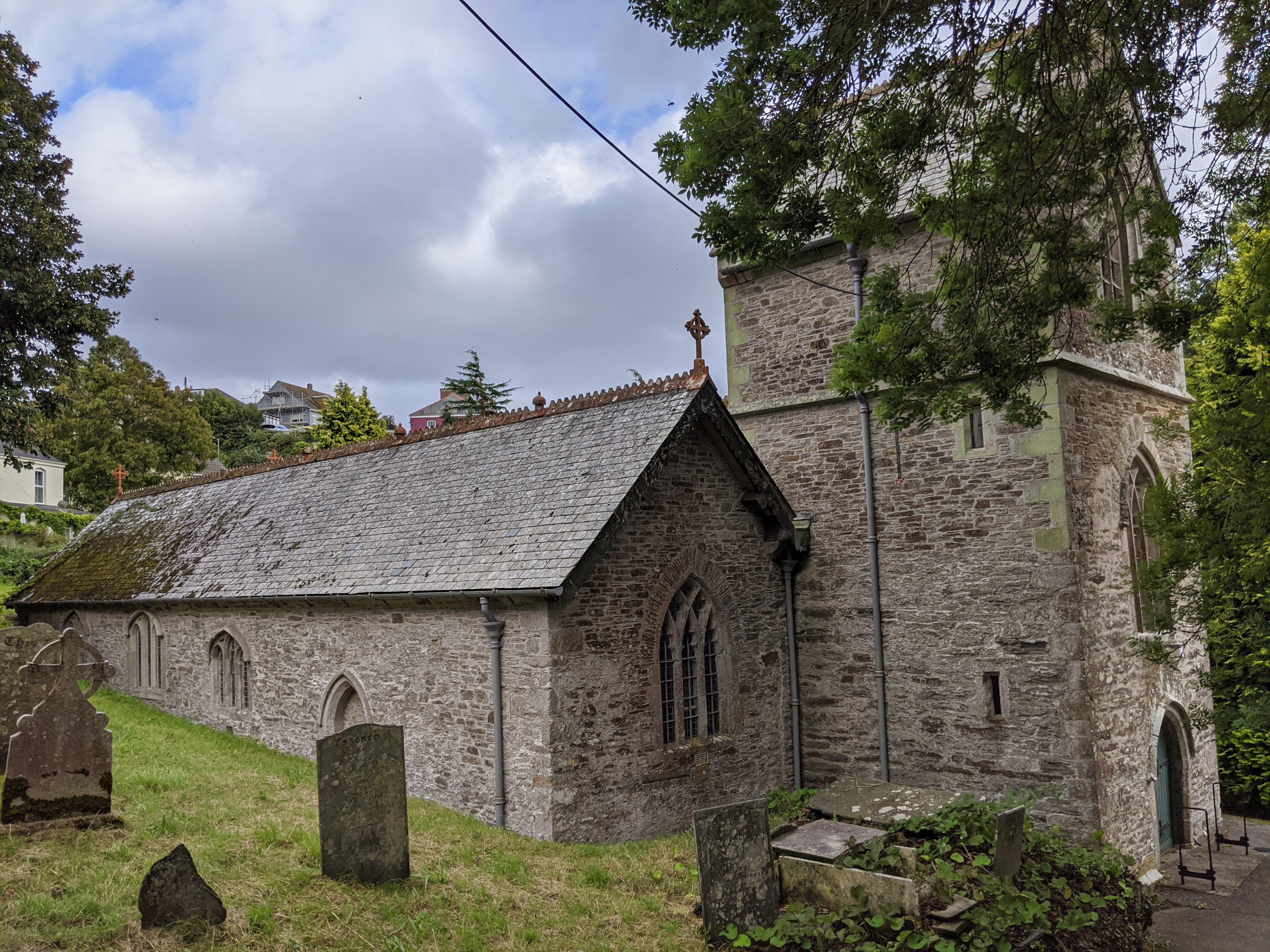All Saints
St Ewe, Cornwall
At St Ewe village the road widens just a bit at the market cross and mounting steps, through the gate you'll see the camellia developed by Mr Tregunna of Caerhayes and named St Ewe.

The site upon which this little church is built has been holy ground for some 1400 years and it is known that around 550AD Saint Mevan and Saint Issey busied themselves in this neighbourhood organising the early Celtic church.
Mevagissey, Cornwall
In all probability they paid a visit here, establishing a ‘Lan’ (an early church settlement) and placing it the care of a monk whose name was Moroch. So the place became identified as Lanmoroch and was known as such for some 800 years.
Moroch’s church was most likely a tiny oratory of wattle (rough wicker work plastered over with mud), and beside it was his still smaller ‘cell’. Round about these would be a few patches of cultivated garden ground, which now form the churchyard. In those days the tide flowed along the valley below, and in the creek. Moroch could fish for his dinner in the tidal waters bordering his estate, grow vegetables on his own plot, and drink pure well water from the spring which still issues from the rock not many yards beyond the north gate of the churchyard.
Saying his office night and day in the oratory, he ate and slept in his cell and ministered in a simple manner to the few Celtic folk in the vicinity, who began about this time to venture down into the valley from their earlier camps on the hilltops. As time went on, the wattle oratory would be replaced by a more enduring building of timber. Around 950 this Celtic ‘Lan’ was dissolved and succeeded by a Saxon order of church government.
The first church of stone now came into being, the only remains of which, so experts tell us, are the holy water stoup built into the Western wall and the decorated base of the cross at the apex of the porch roof. The stoup, when the church was being restored in 1887, was placed out on the grass of the churchyard with other masonry, while repair work went on, and was not found again until too late to be rebuilt into its original position near the south door. This explains the reason of its present unusual situation.
Of interest too are the 18th century gravestones, seaworn boulders from nearby beaches, many of them lettered and patterned in primitive fashion and which now lie along the edge of the churchyard path bear the porch and the lower gateway.
St Ewe, Cornwall
At St Ewe village the road widens just a bit at the market cross and mounting steps, through the gate you'll see the camellia developed by Mr Tregunna of Caerhayes and named St Ewe.
Caerhays, Cornwall
There is a peal of six bells, three of which are medieval, contained within the ancient tower which was repaired in 1970 when a new buttress was built.
Creed, Cornwall
The patron saint of Creed is first recorded as St Crite in the 10th century and may well have been a Cornish saint and possibly the daughter of either King Mark of Cornwall or an Irish king.